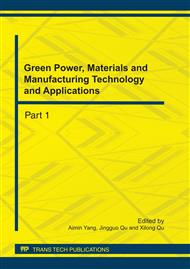p.37
p.42
p.47
p.53
p.58
p.64
p.69
p.74
p.81
Effect of Zr Content on Properties of Mg-Zr PM Damping Alloys
Abstract:
Mg-xZr damping alloys (x=0.6, 1.5, 2.5, 5, mass %) were prepared by PM (powder metallurgy ) technology, and effects of Zr contents on microstructure, mechanical properties and damping capacities of Mg-xZr damping alloys were researched by three-point bending test and DMA, etc. The results show that the microstructure become into strip-shaped morphology, more granular particles appear in the grain boundaries or inside grains, and the grains are more refined with the increase of Zr additions. Micro-hardness and bending strength of the Mg-xZr damping alloys increase with increasing addition of Zr, and reach the maximum value with Zr addition of 2.5%. The damping capacities of Mg-xZr alloys increase slowly with the temperature from 27°C to 100°C, and increase rapidly above 100°C. The damping peaks appear at temperature of 160°C. Mg-5%Zr alloy exhibits the highest damping capacity, and its tanf value reaches to 0.084. The temperature of the damping peak increases with increasing frequencies, showing the characteristic of relaxation damping.
Info:
Periodical:
Pages:
58-63
Citation:
Online since:
August 2011
Authors:
Price:
Сopyright:
© 2011 Trans Tech Publications Ltd. All Rights Reserved
Share:
Citation:


